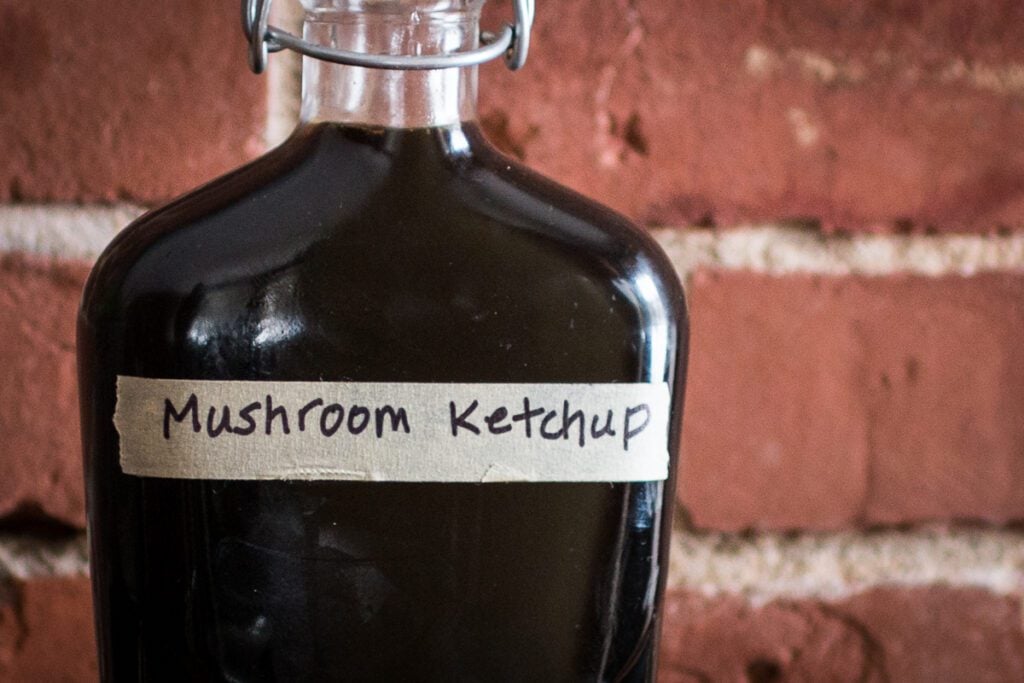Ketchup is found in 97% of American homes and almost certainly in 100 percent barbecues. But this sauce is more than just hamburgers, hot dogs, and Heinz. Indeed, ketchup has a long history dating back to imperial China, when it was made from fish entrails, meat byproducts, and soybeans. Tomato-based ketchup was not invented until 1812. But did you know that ketchup was not originally made with tomatoes?
Instead of tomatoes, ketchup was originally made with mushrooms as the primary ingredient.
The History of Ketchup
The ancestor of modern ketchup did not contain any tomatoes. Though tomato plants were brought to England from South America in the 1500s, their fruits were not consumed for centuries because they were thought to be poisonous.
Instead, the precursor to our ketchup was a fermented fish sauce from southern China. When wealthy Englishmen ate from lead pewter plates, for example, the acid of the tomato leached the lead into the food, causing lead poisoning. Texts dating back to 300 BC describe the use of fermented pastes made from fish entrails, meat byproducts, and soybeans. The fish sauce, known as ge-thcup or koe-cheup by Southern Min speakers, was easy to transport on long ocean voyages.
By the early 1700s, the pastes had spread along trade routes to Indonesia and the Philippines, where British traders developed a taste for the salty condiment. They took samples home and immediately tainted the original recipe. (Source: History)
The Invention of the Tomato Ketchup
Finally, the first recipe for tomato-based ketchup was published in 1812. James Mease, a Philadelphia scientist, created the recipe. He claimed that the best ketchup came from love apples, as tomatoes were known back then. Some people believed tomatoes had aphrodisiac properties.
Before vinegar became a common ingredient, preserving tomato-based sauces was difficult because the fruits decomposed quickly. In 1876, a relatively new company called Heinz introduced its famous recipe, which included tomatoes, distilled vinegar, brown sugar, salt, and various spices. They also pioneered glass bottles, allowing customers to see exactly what they were purchasing.
Tomato-based ketchup gradually became the most common condiment in the United States and Europe. Heinz is now the best-selling ketchup brand in the United States, with over 650 million bottles sold yearly. Do-it-yourself ketchup recipes have all but vanished with the rise of commercial ketchup. And, at least in the United States, it’s difficult to imagine ketchup as anything other than bright red and tomato-y. (Source: History)
Ketchup Rising to Royalty
The 18th century was a ketchup golden age. Recipes for ketchup made from oysters, mussels, mushrooms, walnuts, lemons, celery, and even fruits like plums and peaches were included in cookbooks. Components were typically boiled down to a syrup-like consistency or allowed to sit in salt for extended periods. Both of these processes resulted in a highly concentrated end product: a salty, spicy flavor bomb that could be stored for an extended period without spoiling.
One 1700s recipe called for 100 oysters, three pints of white wine, and lemon peels spiked with mace and cloves. Meanwhile, the commemorative Prince of Wales ketchup was made with elderberries and anchovies. Jane Austen preferred mushroom ketchup. (Source: History)
Image from Forager Chef
